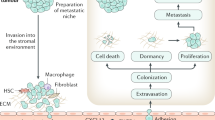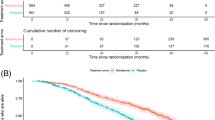Abstract
The bisphosphonates are able to relieve pain from metastatic bone disease and, when given intravenously, may promote bone healing of lytic metastases. In this study, the aim was to assess the acute effects of a single 'high-dose' intravenous treatment with pamidronate on pain, mobility, analgesic consumption and quality of life (QOL). Thirty-four normocalcaemic patients with painful progressing bone metastases (22 from breast, five prostate and seven others) received a single intravenous infusion of 120 mg of pamidronate as palliative therapy. No other systemic therapy or drugs known to influence bone metabolism were administered during the study. Patients' subjective response to treatment was assessed weekly with a pain questionnaire recording a composite of pain intensity, mobility, performance status and analgesic consumption. In addition, patients completed the Rotterdam Symptom Check List (RSCL) for measurement of QOL and a mobility questionnaire. The mean reduction in the pain questionnaire score (recorded on at least two occasions) was 25% [standard error (s.e.) 3%, range 0-75%]. Twenty patients (59%) showed a > or = 20% improvement and were classified as responders. The median duration of symptomatic response was 12 (range 4-24 +) weeks. The responding patients showed a reduction in RSCL score (improvement in QOL) from 35% before treatment to 27% at 6 weeks, but no significant improvement was noted in non-responders. Twenty-one patients were retreated with pamidronate when their symptoms deteriorated again. Eight out of 15 responders showed a second reduction in pain score of > or = 20%, but this was not seen in any of the six non-responders. Five patients have remained well with no additional treatment for their disease other than repeat infusions of pamidronate every 3-6 months. Treatment was well tolerated. Eight (24%) experienced fever after the first treatment only, and four had asymptomatic, biochemical evidence of hypocalcaemia. The acute inhibition of osteoclastic bone resorption induced by a single high-dose treatment with pamidronate can provide useful palliation for patients with bone metastases. Responding patients may be retreated as symptoms dictate to good effect. We are currently running a phase III double-blind trial with high-dose pamidronate for progressive painful metastatic bone disease to exclude any placebo effect and observer bias.
This is a preview of subscription content, access via your institution
Access options
Subscribe to this journal
Receive 24 print issues and online access
$259.00 per year
only $10.79 per issue
Buy this article
- Purchase on Springer Link
- Instant access to full article PDF
Prices may be subject to local taxes which are calculated during checkout
Similar content being viewed by others
Author information
Authors and Affiliations
Rights and permissions
About this article
Cite this article
Purohit, O., Anthony, C., Radstone, C. et al. High-dose intravenous pamidronate for metastatic bone pain. Br J Cancer 70, 554–558 (1994). https://doi.org/10.1038/bjc.1994.344
Issue Date:
DOI: https://doi.org/10.1038/bjc.1994.344
This article is cited by
-
Computed tomography density changes of bone metastases after concomitant denosumab
Skeletal Radiology (2023)
-
Patient-reported outcome instruments used to assess pain and functioning in studies of bisphosphonate treatment for bone metastases
Supportive Care in Cancer (2012)
-
Phase I/II study of adoptive transfer of γδ T cells in combination with zoledronic acid and IL-2 to patients with advanced renal cell carcinoma
Cancer Immunology, Immunotherapy (2011)
-
Procollagen type I N-propeptide is a predictor of skeletal morbidity in patients with malignant osteolytic bone disease on bisphosphonates
Cancer Chemotherapy and Pharmacology (2011)
-
Treatment of painful bone metastases
Nature Reviews Clinical Oncology (2010)



